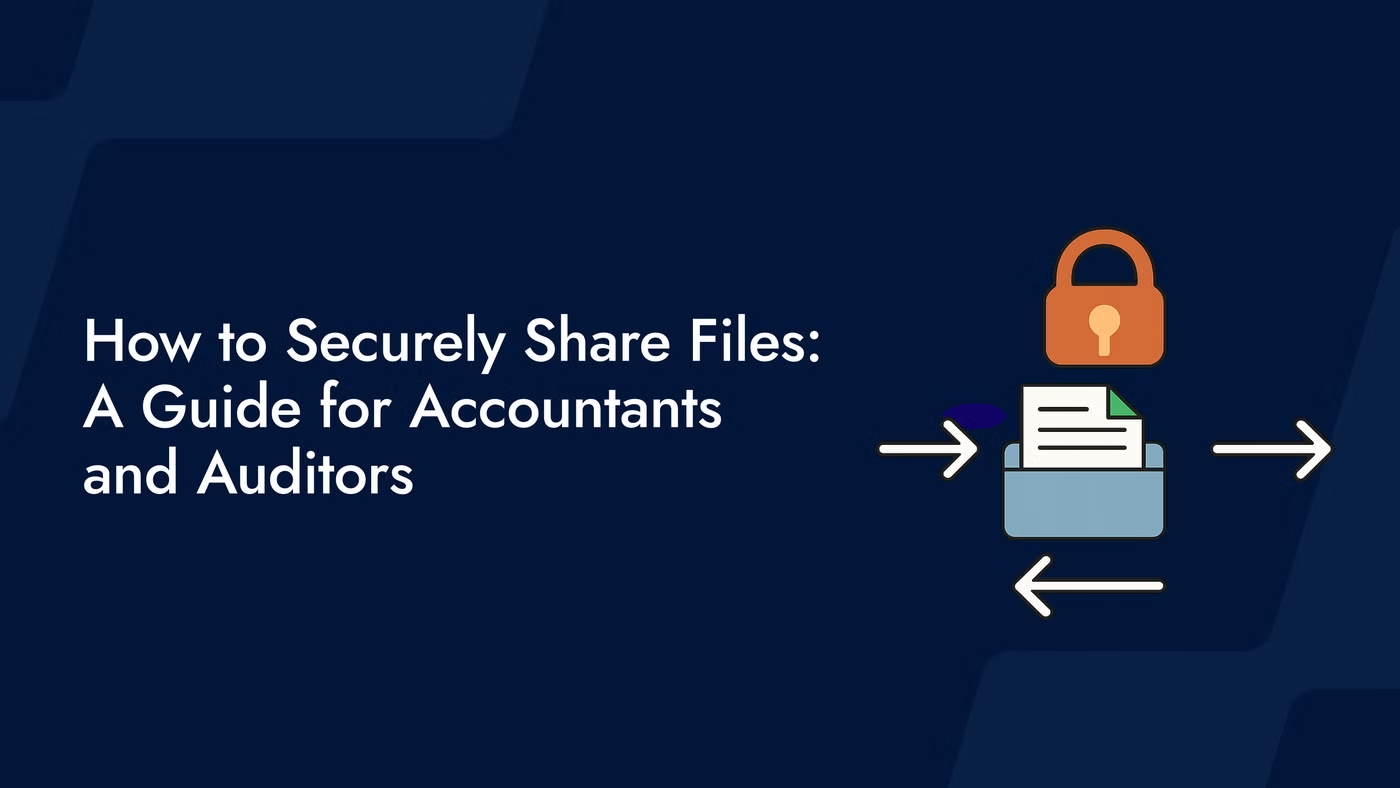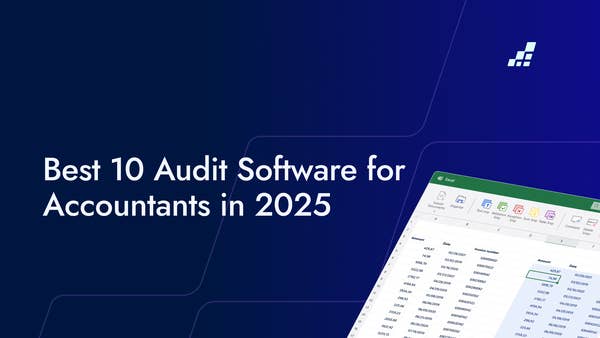- /
- Blog
How to Securely Share Files: A Guide for Accountants and Auditors

In accounting and audit, document exchange is a daily task, but with sensitive client data—from financial statements to tax records—on the line, the stakes are high. As cyber threats rise and compliance requirements tighten, secure file sharing must be a fundamental part of your workflow. As a professional in this field, you are responsible for safeguarding client data at every step.
Why secure file sharing in accounting and audit can’t be overlooked
Both accountants and auditors handle some of the most sensitive data in business. Payroll information, tax filings, bank statements, or confidential contracts—these documents are a goldmine for cybercriminals, and traditional methods like email attachments or shared drives can expose client data to significant risk.
For CPA firms in particular, maintaining client confidentiality is non-negotiable. Secure file sharing goes beyond meeting compliance standards; it's also essential for maintaining strong client relationships and safeguarding your professional reputation.
Secure audit document sharing: 4 best practices for accountants and auditors
- Use encrypted file transfer methods: Always choose platforms that offer end-to-end encryption during file upload, transit, and storage. This ensures that even if data is intercepted, it’s unreadable to unauthorized parties.
- Apply granular access controls: Give each user access to only what they need. Whether it's your audit team or client-side contacts, permissions should be limited and clearly defined.
- Enable expiring access links: Granting permanent access to shared files increases the risk of unauthorized use. Choose tools that allow time-limited access to maintain better control.
- Use audit trails: A good secure file sharing solution will keep a log of who accessed what, when, and what actions were taken. This is invaluable during investigations or compliance reviews.
How teams share documents today: common tools in use
There’s no shortage of tools on the market, but not all are built with audit workflows in mind. The best secure file sharing for accountants does more than encrypt files—it supports collaboration, improves control and reduces friction for both teams and clients.
Here’s a breakdown of commonly used options:
- Generic cloud services: Platforms like Dropbox and Google Drive are widely adopted for their convenience and familiarity, but they often lack audit-specific features such as request tracking, granular permissions, and compliance controls.
- Client portals: Built for structured collaboration between firms and clients, though they typically require account creation, user management, and ongoing maintenance—adding administrative overhead for both sides.
- Email attachment: Still a common method, but highly insecure. Once sent, documents are difficult to track or revoke, and they’re vulnerable to forwarding, interception or misuse.
- Audit-specific platforms like UpLink: Purpose-built platforms for document exchange in audit and financial workflows allow firms to securely request, manage, and track client documents without requiring logins—offering strong security while keeping the client experience simple and efficient.
File sharing risks: common errors that compromise security
Even experienced professionals can make simple missteps that jeopardize security. Common mistakes include:
- Reusing insecure email threads for document exchange.
- Allowing unrestricted access to shared folders.
- Not revoking access when staff or clients leave.
- Relying on passwords, which can be weak or reused.
- Failing to educate clients on how to share documents properly.
These risks can be avoided with the right tools and a well-defined, security-first process.
Secure and simple audit file sharing with UpLink
UpLink, the PBC platform from DataSnipper, is designed to streamline client collaboration while maintaining high levels of security. Get a quick overview of UpLink by watching the video below.
Here’s how UpLink protects your firm and your clients:
Secure, expiring links without passwords
Clients receive a secure, cryptographically signed link valid for 24 hours. No accounts or passwords needed—reducing risks related to password reuse and human error.
Email-based authentication
Access is linked to the user’s email address. If a client employee leaves the company, IT disables their email, which instantly cuts access to UpLink. No need to remember to deactivate accounts.
Customizable access permissions
Want clients to view requests but not previously uploaded documents? Done. Even if a link is misused, access is limited to what the client is allowed to see or do.
Self-service link renewal
When a link expires, clients can generate a new one themselves—without involving the audit team. This minimizes back-and-forth and accelerates engagement.
Designed with security experts
UpLink is SOC 2 compliant and built in collaboration with security auditors. It has a clean security report with zero findings, giving you confidence in its architecture and compliance.
UpLink removes the tension between security and usability, making it the ideal choice for firms that want to maintain high standards without slowing down their audit workflows.
Final thoughts: the right tools make secure collaboration possible
As an accounting or audit professional, you're responsible for protecting client data at every touchpoint. That means being proactive about how files are shared, stored, and accessed.
Using outdated or insecure tools is no longer acceptable in an environment where data breaches are common and expectations for compliance are high. Thankfully, purpose built client document sharing tools like UpLink make it easy to collaborate securely, with workflows that feel intuitive for both auditors or accountants and their clients.
FAQs
Why is secure file sharing important for accountants and auditors?
Accountants and auditors work with highly sensitive client information such as financial statements, tax records, and payroll data. Without proper safeguards, this data is at risk of exposure or misuse. Secure file sharing protects client confidentiality, helps firms stay compliant with regulations like GDPR and builds long-term trust.
How can I securely share files?
To share files securely, use platforms that offer end-to-end encryption, expiring access links, and role-based permissions. Avoid sending sensitive documents via email, and ensure the platform you choose provides audit trails and authentication controls. Look for tools that are built for professional workflows, so you can maintain both security and compliance without adding unnecessary friction.
Is Dropbox and Google Drive secure for accountants and auditors?
While Dropbox and Google Drive offer basic encryption and are widely used, they are not designed specifically for audit workflows. These platforms often lack granular access controls, audit trails, and request tracking. For firms that need to manage sensitive client documents and meet regulatory standards, more specialized solutions are typically required.
How does UpLink support secure file sharing during the audit process?
UpLink is designed specifically for audit workflows. It allows firms to send secure, expiring links to clients—no login or password required. Access is tied to the recipient’s email, permissions can be customized, and clients can self-renew expired links. With SOC 2 compliance and a clean security report, UpLink makes it easier for audit teams to collect and manage documents securely and efficiently.
.png)

.png?width=600&quality=70&format=auto&crop=16%3A9)
